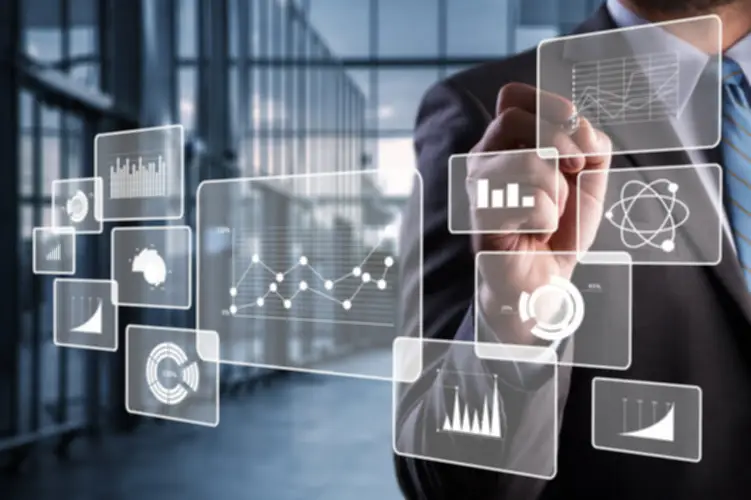+86-(0)768-6925905
Additionally, given its decentralized nature, fog computing is healthier fog computing vs cloud computing suited to supporting extremely dynamic environments or these with low bandwidth connectivity necessities. There is a lot of debate within the tech world concerning the relative deserves of cloud computing and fog computing. Both strategies have their pros and cons, but one key issue that units them apart is responsiveness. In phrases of pace and efficiency, cloud computing has a clear edge over Fog computing.
Processing Power And Storage Capability
Edge, fog, and cloud are crucial computing frameworks that may empower companies to thrive in today’s advanced technological ecosystem. We’ve already got used to the technical term cloud, which is a community of multiple gadgets, computer systems and servers linked to one another over the Internet. There are several forms of fog computing, together with client-based, server-based, and hybrid fog computing. If you think that the fog and edge are terms of distinction with no difference, you’d be principally correct – which also means you’d be partially wrong. In advocating one know-how over the opposite, supporters point to a slim set of variations.
Ask The Automation Professionals: The Necessity And Use Of Simulation In Course Of Control
It extends the capabilities of edge computing by providing a layer of computing infrastructure between the sting gadgets and the cloud. This infrastructure is called the fog layer, and it supplies additional computing sources and companies to edge devices. Edge computing and fog computing are two ideas which are usually used interchangeably, however they’ve important variations. Edge computing is a decentralized computing model that brings information processing closer to the units and sensors that generate it. Fog computing, on the opposite hand, is a distributed computing mannequin that extends the capabilities of edge computing to a larger community of devices and sensors.
Journal Of Systems Architecture
Edge computing and fog computing are two complementary computing fashions that are designed to address the challenges of processing and analyzing data in actual time. Edge computing brings computing closer to the source of data, whereas fog computing extends the capabilities of edge computing by offering further computing assets and companies to edge gadgets. Both models have many practical purposes in today’s digital age and can play an more and more important function in the future of computing.

Dependence On The Standard Of Core Community

It’s an answer that lies somewhere in between the edge and the cloud however is extra carefully aligned with edge computing. Data is collected from sensors and despatched to a local space network (LAN) as a substitute of being despatched to the cloud in a centralized location for processing. This additionally permits information factors from multiple sources to be processed at a single location for comparability and evaluation, giving a big-picture view of the native community while nonetheless maintaining a relatively small scale. The primary advantages of utilizing fog computing are its elevated effectivity over the cloud when sending giant amounts of knowledge and decreased safety dangers as a outcome of its decentralized nature.
Moreover, that listing of applications is growing daily because the Internet of Things (IoT) continues to expand and connect things we never thought had been connectable, not to mention worthy of a connection. Conservative estimates put the number of connected IoT gadgets at 55 billion by the 12 months 2025. There is a big debate presently on which know-how is better for companies – fog computing or cloud computing. Here, we are going to explore the necessary thing benefits of both technologies to find a way to differentiate cloud computing from fog computing and make an informed decision for your business.
All three computing frameworks—cloud, fog, and edge supply unique benefits to businesses relying on their necessities. Cloud computing can be nice if you provide purposes that don’t require real-time responses. For occasion, in purposes like IoT (Internet of Things), fog computing allows stakeholders to perform real-time information evaluation at the device degree. This eradicates the need to send information to the cloud and improves efficiency. Edge computing removes the hassle of needing connectivity and can instantly break down data into useful pieces of information for use on the supply.
Cloud computing is frequently used to realize gentle real-time techniques, like video-streaming, E-commerce, or workplace and collaboration applications. However, this chapter is somewhat interested in exploring how cloud computing matches in as a design precept for distributed embedded purposes that form exhausting real-time systems. In this utility, edge information facilities, like their larger cousins, will provide the underlying platform to agnostically help fog community operations be they from Cisco, EMC, VMware or Intel.
But should you feel that these advances have left you behind with your fundamental information, then you must Learn Cloud Computing from Scratch and get your experience consistent with the changing landscape of computing. On the opposite hand, fog computing extends cloud computing and companies to the sting of an enterprise’s community, enabling real-time knowledge evaluation and decision-making. It processes knowledge instantly on units on the supply, ensuring excessive operational speed and effectivity. This research compared the fog computing paradigm with the traditional cloud computing paradigm in the context of the Internet of Things (IoT). To do this, the standards and traits of fog computing and clustered fog computing are expressed quantitatively. As the variety of linked devices grows, cloud-based platforms that offer real-time, low latency companies show to be an issue.
It also enhances security by preserving delicate data localized and decreasing the necessity to transmit it to exterior servers. Individual organizations need to look at which infrastructure most accurately fits their wants and provides the most worth. Understanding what a company’s IoT wants are and incorporating the best computing solution from the ground up is essentially the most efficient, cost-effective and forward-thinking move a business could make. Thinking by way of operational needs means making a choice based mostly on the extent of IoT wanted (i.e., asset stage, local level, regional level, nationwide stage or international level). Each of these ranges has an answer that is a naturally higher fit than the others. The key to unlocking the best-fitting IoT solution is knowing the differences between them.
All these units will produce huge quantities of knowledge that must be processed rapidly and in a sustainable means. To meet the growing demand for IoT options, fog computing comes into motion on par with cloud computing. The objective of this article is to check fog vs. cloud and tell you more about fog vs cloud computing potentialities, as nicely as their professionals and cons. So, it’s not easy to govern valuable information in comparison with cloud computing with centralized data processing. Edge computing is a distributed computing framework that enables localized information processing and analytics. It brings enterprise purposes near information sources corresponding to local edge servers or IoT devices.
- With cloud computing, a central community of storage and processing sources is used, usually comprising thousands and even tens of millions of nodes.
- Edge computing brings computing nearer to the source of data, whereas fog computing extends the capabilities of edge computing by providing further computing resources and services to edge devices.
- Regarding cloud computing versus fog computing, there are a few important differences that set these two paradigms aside.
Moreover, fog computing tends to be higher suited to smaller networks with decrease throughput requirements than larger ones. Overall, fog computing and cloud computing similarities prevail from a high-level perspective, their individual strengths make them appropriate for various functions within the realm of recent expertise. The integration of the Internet of Things with the cloud is an economical method to do enterprise. They depend on enterprise applications similar to point of sale, inventory administration, video security, and new IoT transformative applications and want flexible, dependable, safe, scalable, and resilient in-store infrastructure. In this publish, we’ll perceive the ideas of edge, fog, and cloud computing and their key differences. Cloud computing contains the delivery of computing providers, together with information storage, servers, networking, analytics, and intelligence over the Internet.
While fog computing has some advantages over cloud computing, it’s not more probably to replace it entirely. Fog computing is extra efficient because information is processed closer to the supply, which reduces latency. It can additionally be more secure as a outcome of data does not have to travel as far and is, therefore, less prone to be intercepted. In contrast, whereas fog computing may be distributed geographically, it is typically extra localized than cloud computing and should solely occupy a single geographic location. This design permits for larger location awareness with fog computing, as the info being processed by each individual node of the system is directly relevant to its physical surroundings. As a outcome, whereas we take a comparison of fog computing and cloud computing, we will witness many benefits.
There are all the time a number of elements to keep in mind when choosing between edge, fog and cloud computing. As such, when contemplating the pros and cons of cloud vs fog computing, the query of location awareness turns into an important factor to consider. In addition to offering fast and easy access to information, cloud computing additionally allows for real-time collaboration among people and organizations. New requirements of the emerging technologies are the driving force behind IT growth.
Transform Your Business With AI Software Development Solutions https://www.globalcloudteam.com/
